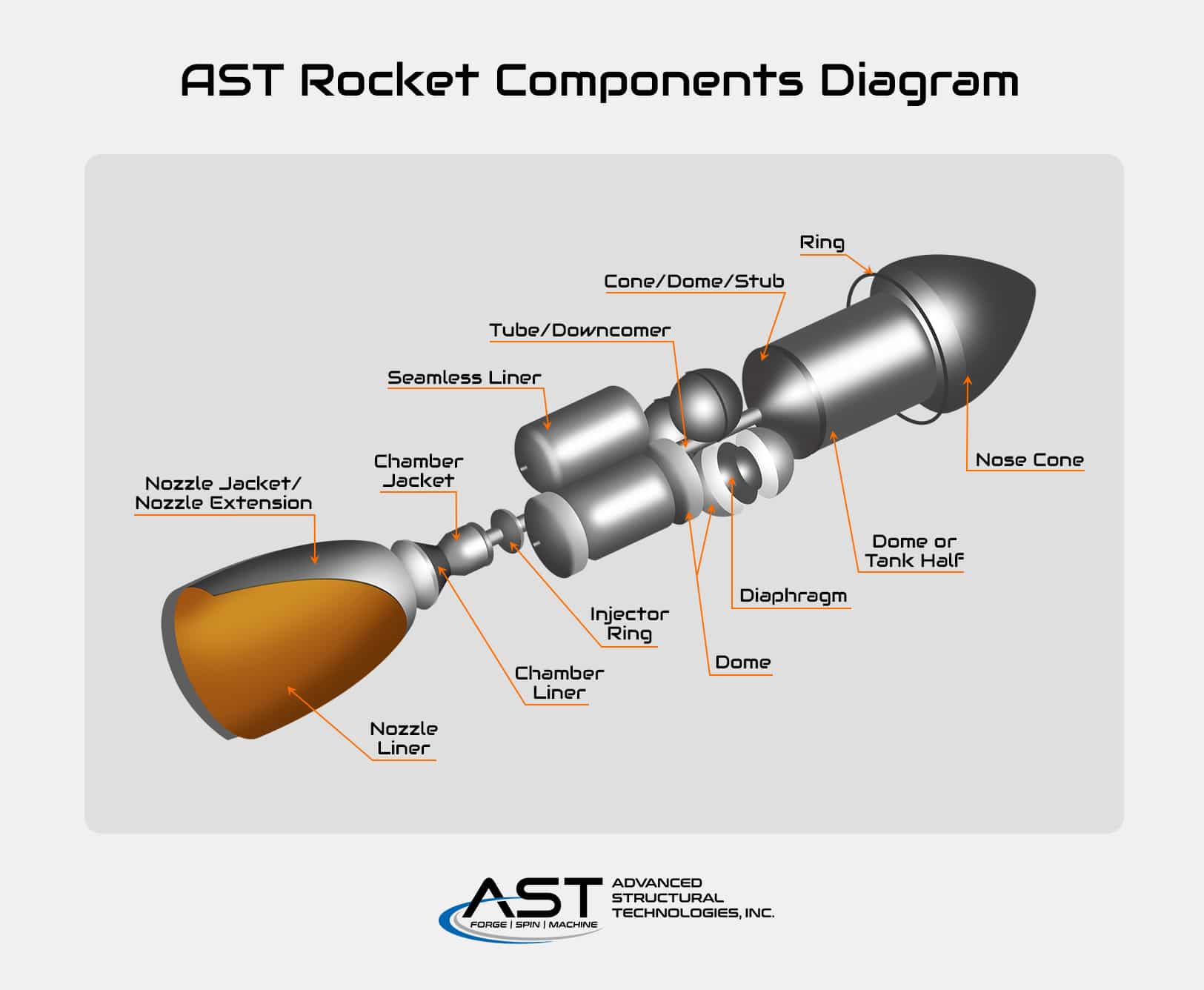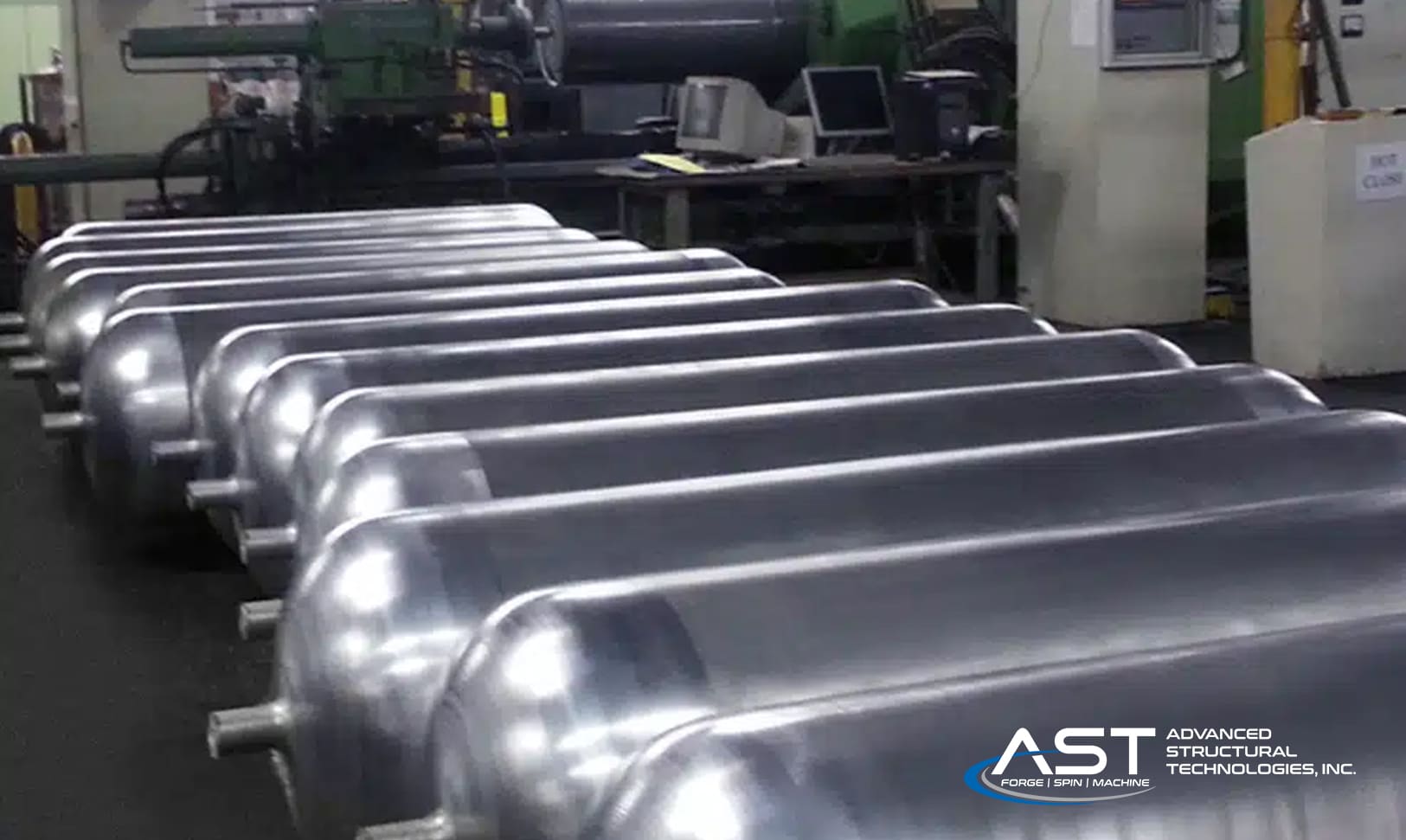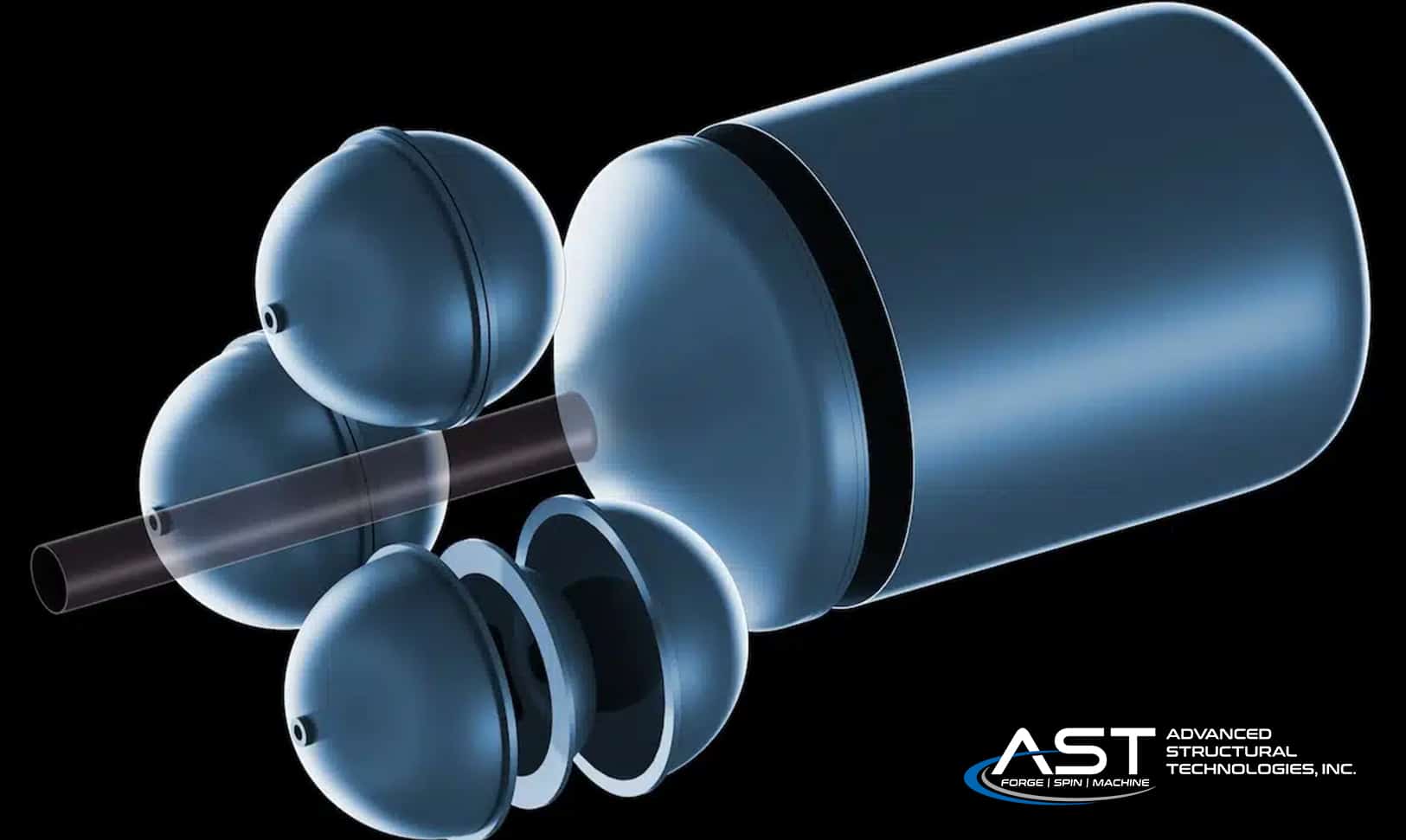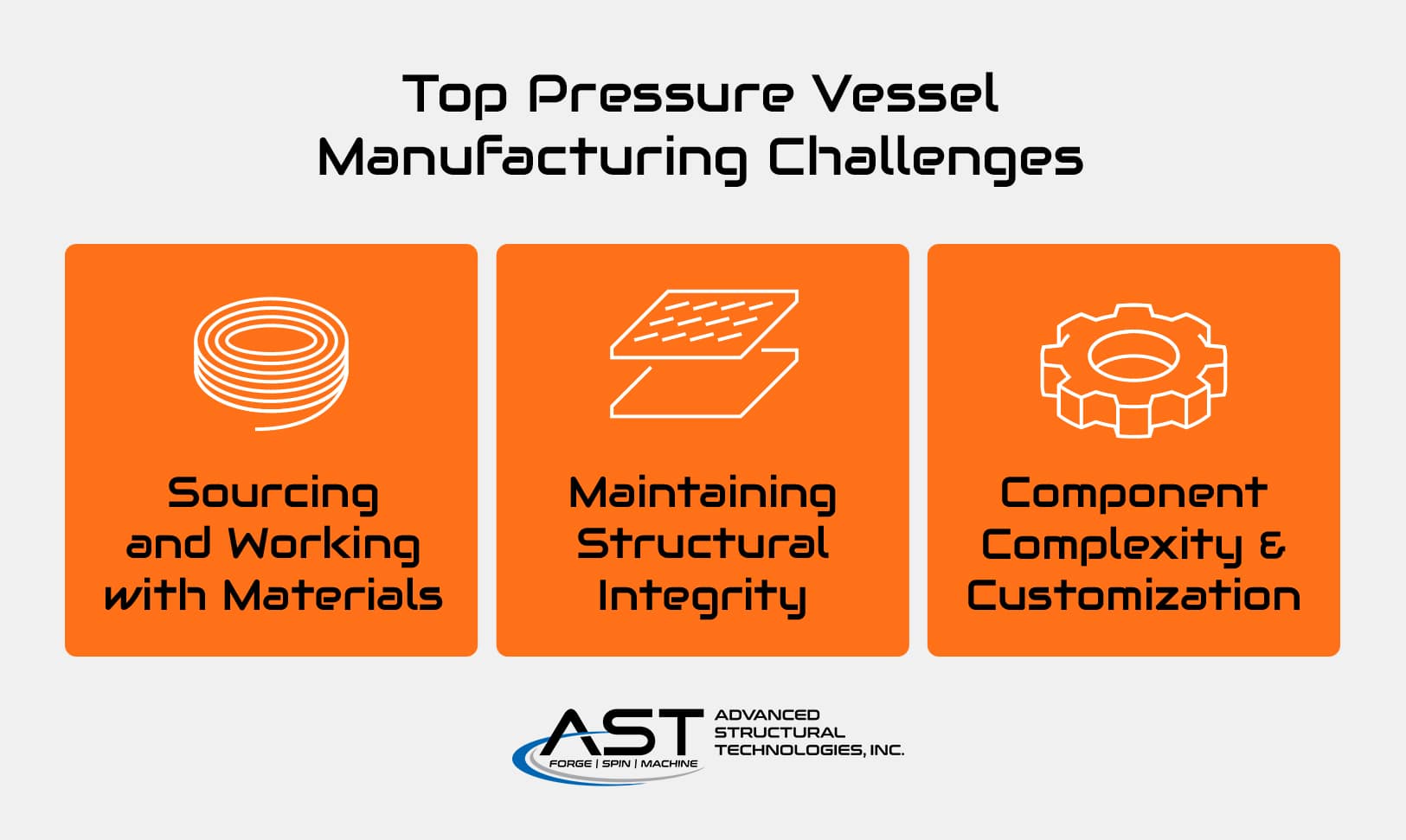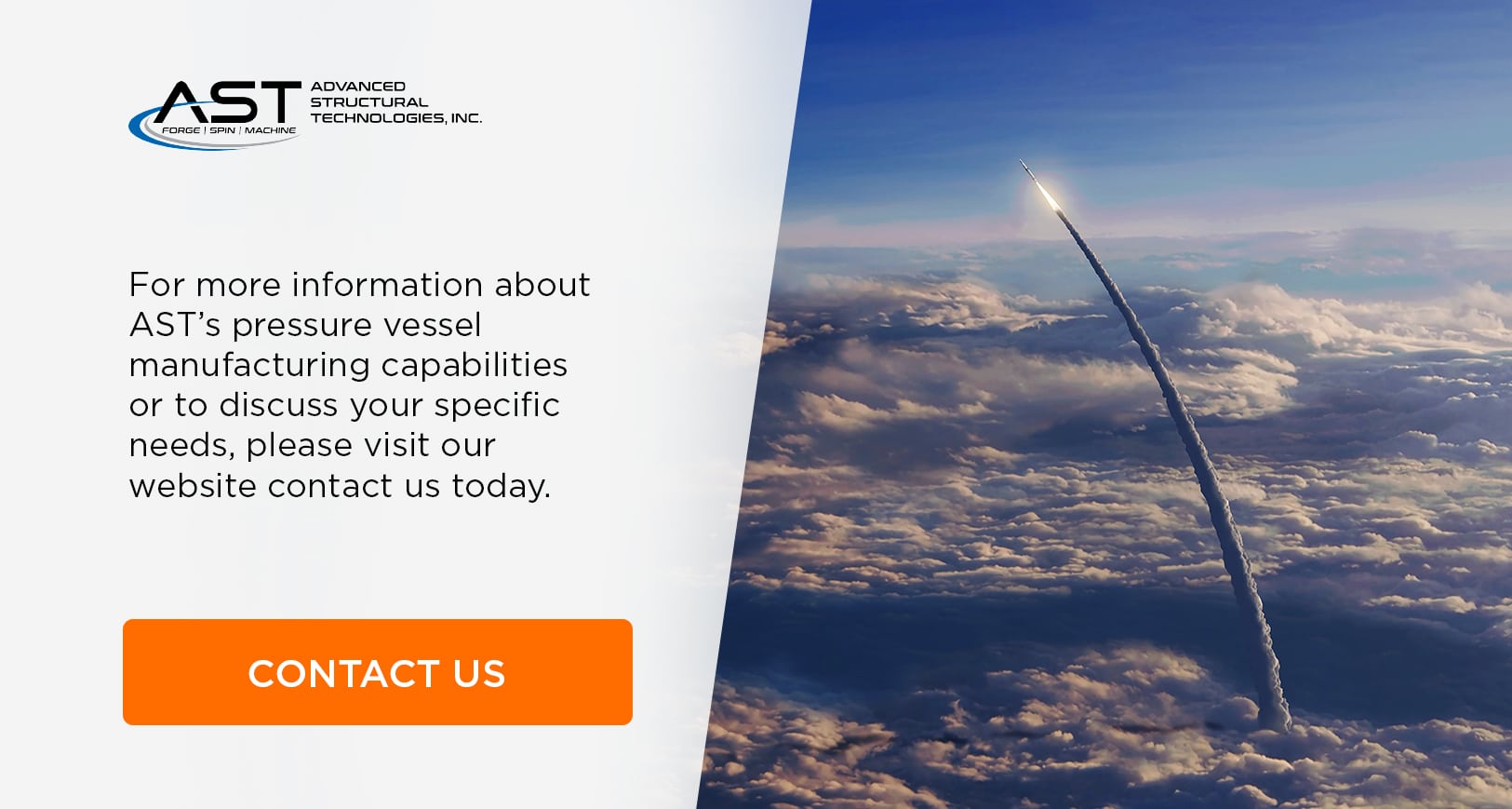Rocket Pressure Vessel Manufacturing – The AST Advantage
Pressure vessel components are absolutely vital to the aerospace industry.
These components play a crucial role in storing and managing pressurized gasses and fluids within rockets. They must withstand extreme conditions, including high pressure and severe temperatures (both high and low). Their reliability is paramount to launch mission success.
But rocket manufacturers face tough challenges in procuring and manufacturing these components, such as sourcing specialty materials, ensuring precise properties, and meeting stringent performance standards.
In this article, we will explore the various types of pressure vessel components, their functions, and the biggest manufacturing challenges launch teams face when it comes to pressure vessels.
Then we’ll highlight a unique approach to producing these components, demonstrating how rocket manufacturers can address those challenges.
What are Rocket Pressure Vessel Components?
Definition of Pressure Vessel Components
Pressure vessel components are specialized structures within rockets designed to hold and manage high-pressure gasses and fluids. These components must endure extreme conditions, ensuring the safety and efficiency of the rocket’s systems. They are essential for maintaining the integrity and performance of propulsion and operational mechanisms during space missions.
Types of Pressure Vessel Components
1. Cylinders
- Function: Store gasses and fluids with a cylindrical design, essential for maintaining the rocket’s structural integrity under pressure.
- Manufacturing Implications: Constructed from materials like aluminum, titanium, and Inconel, these cylinders must be precisely manufactured to handle high stress and avoid leaks.
2. Domes
- Function: Provide end closures for cylindrical pressure vessels, ensuring that the stored contents remain securely contained under high pressure.
- Manufacturing Implications: These domes are manufactured to exacting standards to endure high pressure and mechanical stress, often requiring advanced forming and welding techniques.
3. Transfer Tubes
- Function: Serve as conduits for transferring pressurized gasses and fluids between different parts of the rocket.
- Manufacturing Implications: Tubes must be produced with high precision to ensure compatibility with other components and prevent leaks. Materials used include high-strength alloys that can withstand the rigorous conditions of space travel.
4. Pressure Vessel Liners
- Function: Serve as the metal inner liners for composite overwrapped pressure vessels (COPVs), preventing gas from escaping.
- Manufacturing Implications: Made from materials like aluminum and titanium, these liners require precise forming and machining to ensure a perfect fit and high durability.
Materials Used in Pressure Vessel Component Manufacturing
The materials used for pressure vessel components are chosen for their ability to withstand high pressures and extreme conditions.
Common materials include:
- Aluminum: Lightweight and corrosion-resistant, ideal for reducing overall rocket weight.
- Titanium: High strength-to-weight ratio and excellent corrosion resistance, suitable for demanding aerospace applications.
- Inconel®: A nickel-chromium superalloy known for its high temperature and corrosion resistance, used in high-stress components.
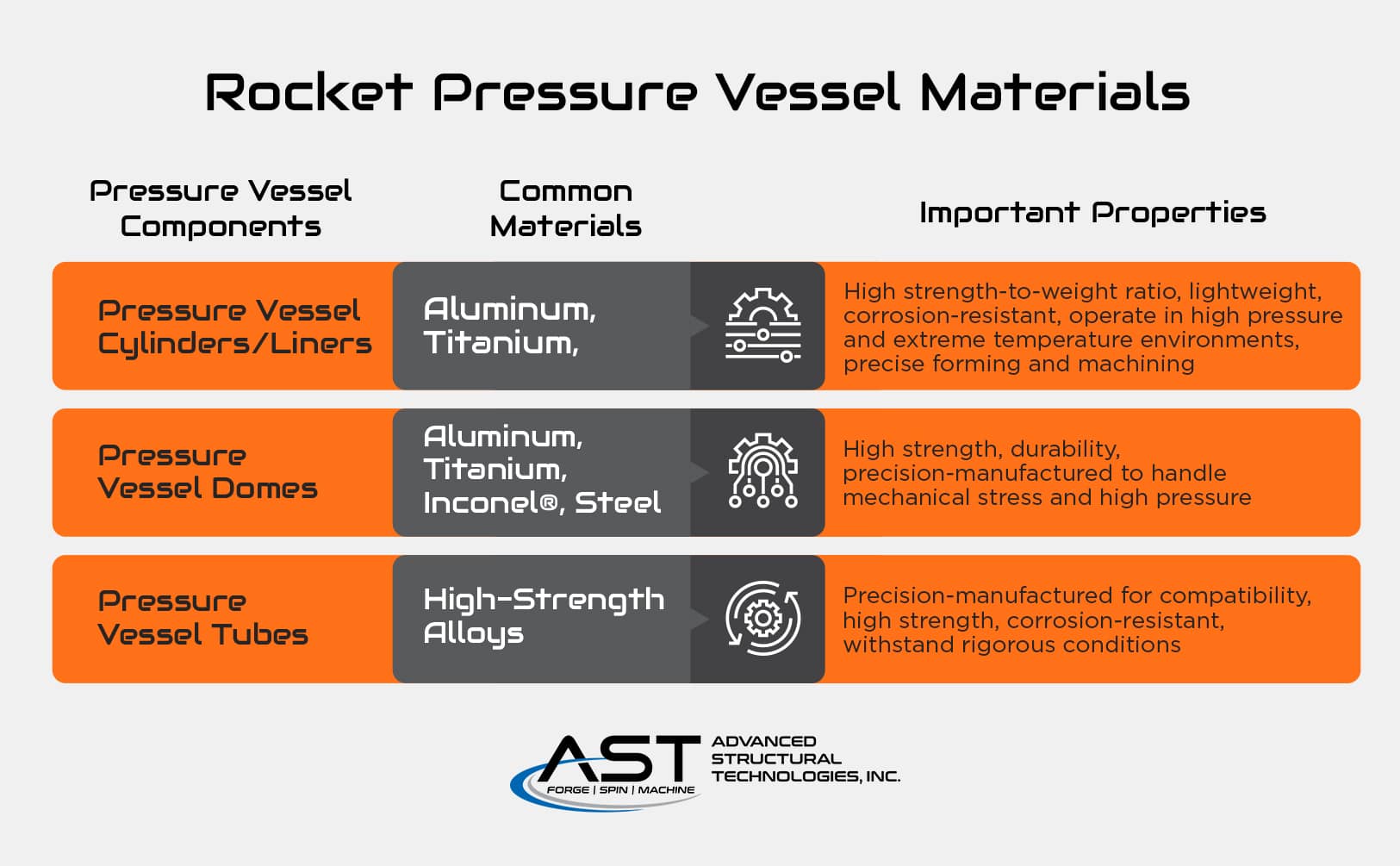
| Pressure Vessel Components | Common Materials | Important Properties |
| Pressure Vessel Cylinders/Liners | Aluminum, Titanium, | High strength-to-weight ratio, lightweight, corrosion-resistant, operate in high pressure and extreme temperature environments, precise forming and machining |
| Pressure Vessel Domes | Aluminum, Titanium, Inconel, Steel | High strength, durability, precision-manufactured to handle mechanical stress and high pressure |
| Pressure Vessel Tubes | High-Strength Alloys | Precision-manufactured for compatibility, high strength, corrosion-resistant, withstand rigorous conditions |
Manufacturing Processes for Pressure Vessel Components
Pressure Vessel Manufacturing Processes
Manufacturing pressure vessel components involves advanced techniques to ensure they meet the high standards required for aerospace applications. The primary methods include rotary forging and flow forming, both of which provide the precision and durability needed for these critical components.
Pressure Vessel Production Techniques
Rotary Forging
- Process: Rotary forging combines rotational and axial compression movements to shape metal with precise control. This method allows for superior material utilization and enhanced mechanical properties by optimizing grain structure.
- Benefits: Greater dimensional accuracy, improved surface finish quality, and better material hardening. Rotary forging requires less force than conventional methods, reducing contact and friction, which results in smaller presses and simpler tools.
Flow Forming
- Process: Flow forming is a precise metal forming technique where a tubular preform is placed on a mandrel and shaped by rollers applying pressure while the material is rotated. This method allows for controlled reduction in wall thickness and lengthening of the material, achieving a high degree of accuracy and strength.
- Benefits: Creates components with uniform thickness and enhanced material properties. Flow forming results in a longer service life and higher load-bearing capacity than traditional metal cutting processes. It is ideal for producing seamless, one-piece structures that can withstand high pressures and temperatures.
Common Challenges in Manufacturing Pressure Vessel Components
1. Sourcing and Working with Materials
Acquiring materials that meet the stringent specifications for aerospace applications can be challenging.
High-strength metals such as aluminum, Inconel, and other specialized nickel alloys are often required but can be difficult to source in the necessary sizes and quantities.
Ensuring materials possess the necessary properties, such as corrosion resistance, high-temperature tolerance, and strength-to-weight ratios, is crucial.
For example, many launch teams have difficulty sourcing high-quality forged materials for pressure vessel components, which are essential for maintaining structural integrity and performance.
2. Maintaining Structural Integrity
Ensuring consistent grain flow throughout the component is vital to prevent weak points and material fatigue. This is crucial for maintaining the strength and durability of pressure vessels under extreme conditions.
Achieving the required precision in manufacturing is necessary to ensure the components can withstand high pressures and temperatures without failure.
Maintaining structural integrity in pressure vessel components is essential to handle the extreme conditions encountered during rocket launches and space missions.
3. Component Complexity & Customization
Launch teams require customized designs tailored to specific applications, which can add significant complexity to the manufacturing process.
Integrating features such as flanges, attachment points, varying wall thicknesses, etc.. are all nuances that can kill project timelines, if they’re not managed properly..
Furthermore, building custom one-piece pressure vessel components (without welds or joints) is particularly challenging, but can be essential to ensure maximum strength and reliability.
AST’s Approach to Manufacturing Pressure Vessel Components
AST takes a client-centric approach, working closely with customers to understand their specific needs and requirements. This collaborative design process supports concurrent engineering, allowing clients to be involved in every step of the development.
This approach ensures that the final product meets all specifications and performance criteria, providing tailored solutions for each project.
The are four “Pillars” to the “AST advantage” in manufacturing pressure vessels:
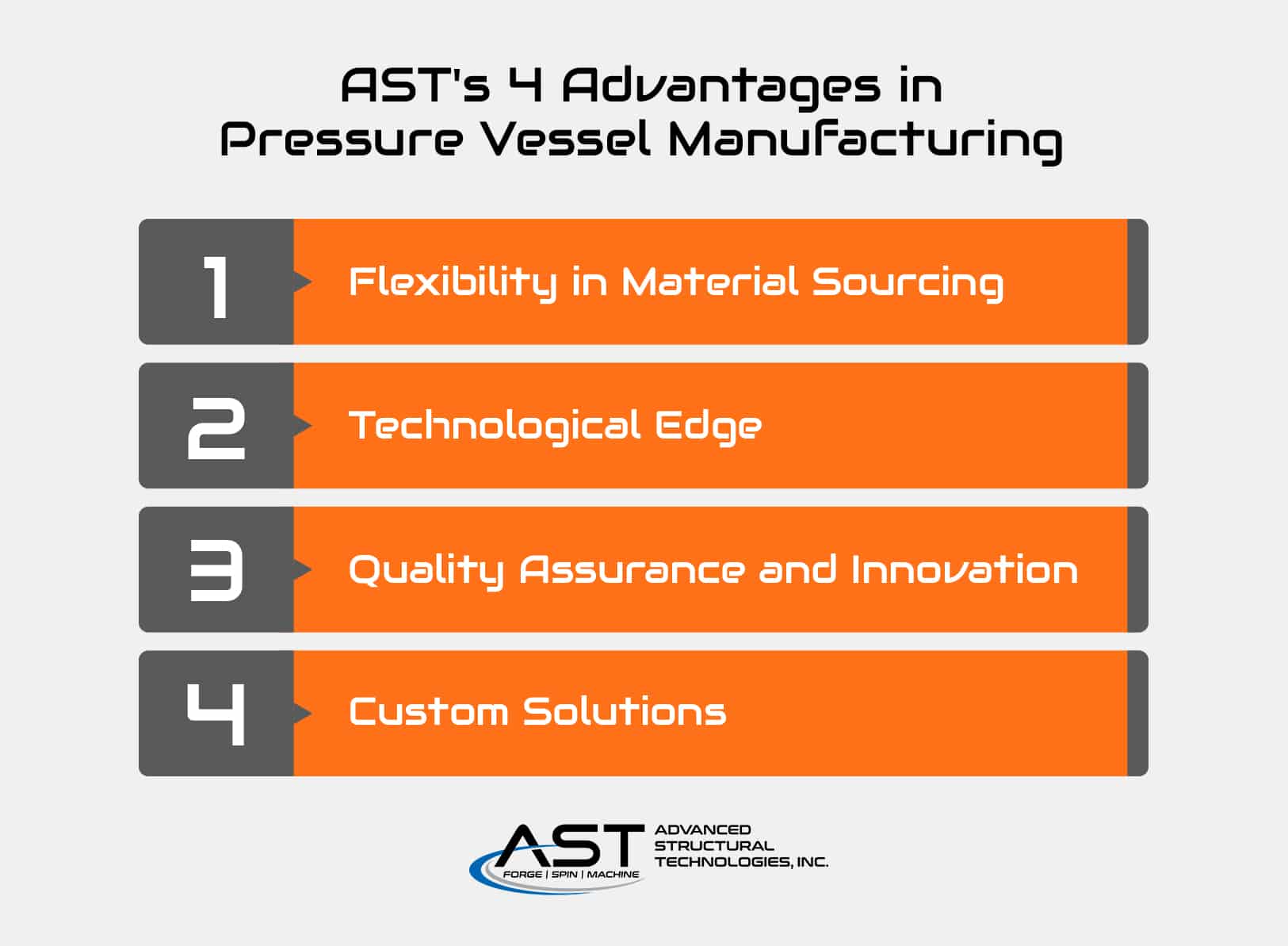 1. Flexibility in Material Sourcing
1. Flexibility in Material Sourcing
AST demonstrates flexibility in utilizing various material sources, including billets or disks.
This adaptability helps to shorten lead times, reduce costs, and address material availability issues.
The rotary forging process, in particular, enhances this flexibility, allowing AST to efficiently produce high-quality pressure vessel components with consistent material properties.
2. Technological Edge
AST’s advanced manufacturing technologies, such as rotary forging and flow forming, are key to producing high-quality pressure vessel components.
These technologies enable precise shaping and uniform material thickness, resulting in components with superior mechanical properties.
AST’s ability to produce liners with smooth interior surfaces, reduced input weights while maintaining good metal properties, such as; elongation, yield, and tensile strength is a testament to their technological edge.
3. Quality Assurance and Innovation
Quality assurance is a cornerstone of AST’s manufacturing philosophy.
Rigorous quality control measures are implemented at every stage of production to ensure that each component meets the highest standards.
AST is also committed to innovation, constantly exploring new techniques and materials to stay ahead in the aerospace industry.
The focus on grain structure, strength, and elongation in manufactured parts underscores AST’s dedication to producing reliable and high-performing components.
4. Custom Solutions
AST excels in providing customized solutions tailored to client needs.
By understanding the specific requirements of each project, AST can optimize material efficiency, component quality, and turnaround time.
This ability to offer bespoke solutions ensures that AST can meet the diverse demands of the aerospace industry, delivering components that perform reliably under extreme conditions.
Conclusion
Pressure vessel components are integral to the success of aerospace missions, requiring precision, strength, and reliability.
Throughout this article, we have explored the various types of pressure vessel components, the manufacturing processes involved, and the common challenges faced by rocket manufacturers.
We also highlighted AST’s innovative approach to producing these components, demonstrating how advanced techniques and client-centric philosophy address these challenges most effectively.
AST’s commitment to quality, innovation, and custom solutions ensures that they remain at the forefront of pressure vessel manufacturing for the aerospace industry. In-house rotary forging, flow forming, and material sourcing enables us to deliver high-performance components that meet the stringent requirements of today’s rocket launch industry.
For more information about AST’s pressure vessel manufacturing capabilities or to discuss your specific needs, please visit our website or contact our sales team at [email protected].



